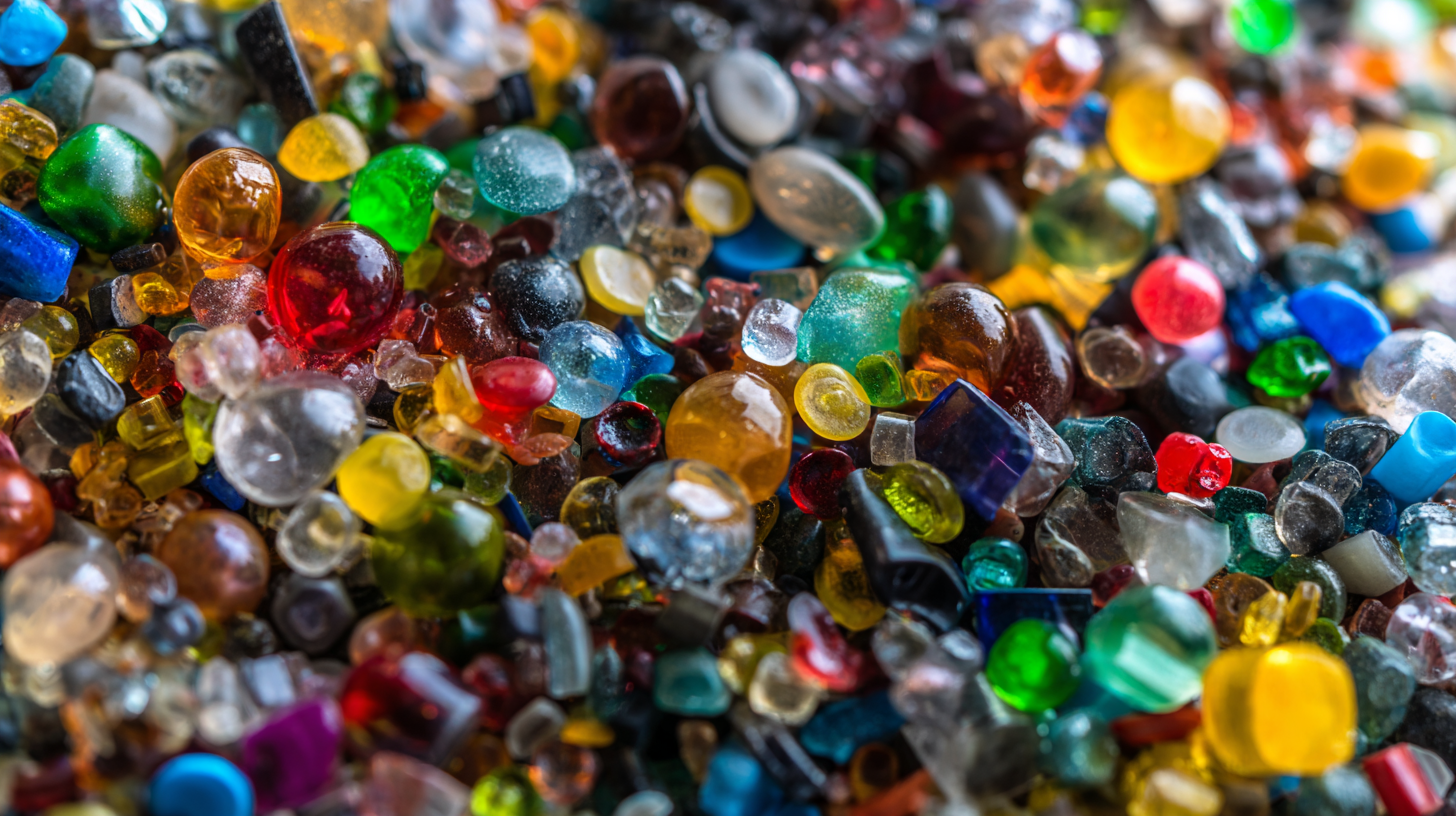Polyethylene plastic, the most widely produced plastic globally, accounts for approximately 30% of the total plastic market, with an estimated production of over 100 million tons per year as of 2021. Known for its versatility, polyethylene plastic is utilized across various industries, ranging from packaging materials to automotive components and medical devices. Its lightweight, durable, and moisture-resistant properties make it a preferred choice in consumer products and industrial applications.

However, the environmental implications of polyethylene plastic usage are becoming increasingly scrutinized, as reports indicate that around 8 million tons of plastic enter the oceans annually, contributing to severe ecological consequences. Understanding the benefits and drawbacks of polyethylene plastic is crucial for developing sustainable practices and innovation in recycling technologies, highlighting the urgent need for a comprehensive exploration of its applications and environmental impact.
Polyethylene is a widely used plastic known for its versatility and adaptability across various applications. There are several key types of polyethylene, each characterized by unique properties that make them suitable for specific uses. The most prevalent types include Low-Density Polyethylene (LDPE), High-Density Polyethylene (HDPE), and Linear Low-Density Polyethylene (LLDPE).
LDPE, with its flexible and lightweight nature, is commonly found in plastic bags and film applications, while HDPE offers greater strength and rigidity, making it ideal for containers, pipes, and plastic bottles.
LLDPE combines the benefits of both LDPE and HDPE, providing enhanced tensile strength and flexibility. This type is often used in stretch films and packaging materials that require durability and resistance to punctures. Each of these polyethylene types plays a vital role in different industries, ranging from packaging and construction to consumer goods. Understanding the properties of these variants not only highlights their importance in everyday products but also opens discussions about their environmental impact and the future of sustainable plastic use.
Polyethylene plastic is a ubiquitous material found in various aspects of daily life due to its versatility and adaptability. One of its most common uses is in packaging, where it forms plastic bags, wrap, and containers. This form of polyethylene is lightweight yet durable, making it ideal for protecting products while reducing shipping costs. Additionally, the food industry extensively employs polyethylene in food storage bags and bottles, ensuring that items remain fresh and free from contamination.
Another significant application of polyethylene is in construction materials, where it is used to produce piping and insulation. Its resistance to moisture and flexibility allows it to withstand environmental stressors, making it a popular choice for both residential and commercial buildings. Furthermore, polyethylene bags are often utilized in gardening and landscaping, serving as weed barriers or for planting. With its extensive range of applications—from household items like toys and containers to industrial-grade products—polyethylene has become an integral part of modern life, showcasing its adaptability across different sectors.
| Use | Description | Benefits | Environmental Impact |
|---|---|---|---|
| Packaging | Used for bags, wraps, and containers to protect products. | Lightweight, durable, moisture-resistant. | Can contribute to plastic waste in landfills. |
| Bottles | Used for water, soda, and various beverage containers. | Recyclable, lightweight, and shatterproof. | Recycling rates vary; contributes to marine pollution if not disposed of properly. |
| Toys | Manufactured from polyethylene for durability and safety. | Non-toxic, versatile, and colorful options for children. | Can persist in the environment and contribute to waste. |
| Textiles | Used in synthetic fabrics and upholstery. | Durable, water-resistant, and easy to clean. | Some fabrics can be non-biodegradable. |
| Construction | Adoption in waterproofing membranes and insulation materials. | Durable and excellent barrier properties. | Can lead to long-term waste if not recycled. |
| Medical | Used in medical devices, syringes, and drug packaging. | Biocompatible, safe for medical use. | Dispose of properly to avoid contamination. |
| Household Items | Used in containers, cutting boards, and kitchen gadgets. | Lightweight, affordable, and easy to mold. | Can accumulate in landfills if not recycled. |
| Outdoor Products | Used for furniture, garden equipment, and tarps. | Weather-resistant and low maintenance. | Durability can lead to prolonged environmental presence. |
| Automotive Parts | Used in bumpers, dashboards, and interior components. | Lightweight and energy absorbent. | Recycling efforts are improving but still challenging. |
 Polyethylene, one of the most widely used plastics in the world, offers numerous benefits that make it an essential material in various industries. First and foremost, its durability stands out; polyethylene is highly resistant to impact, moisture, and chemicals, ensuring that products made from this material maintain their integrity over time. This resilience not only extends the lifespan of polyethylene products but also reduces the need for frequent replacements, making it an environmentally favorable choice when considering resource conservation.
Polyethylene, one of the most widely used plastics in the world, offers numerous benefits that make it an essential material in various industries. First and foremost, its durability stands out; polyethylene is highly resistant to impact, moisture, and chemicals, ensuring that products made from this material maintain their integrity over time. This resilience not only extends the lifespan of polyethylene products but also reduces the need for frequent replacements, making it an environmentally favorable choice when considering resource conservation.
Cost-effectiveness is another key advantage of polyethylene. The production process for this plastic is relatively inexpensive, which translates into lower prices for consumers and businesses alike. Its lightweight nature further enhances its appeal, as it reduces shipping costs and energy consumption during transportation. Additionally, polyethylene’s versatility allows it to be molded into various forms, from flexible films to rigid containers, catering to a wide range of applications in packaging, construction, and consumer goods. These combined benefits make polyethylene a staple material, driving innovation while also addressing environmental concerns through efficiency and sustainability.
Polyethylene (PE) plastic, widely used for packaging, has come under scrutiny due to its environmental impacts. Recent life cycle assessments reveal that while PE packaging offers durability and versatility, it contributes significantly to plastic pollution, particularly in marine environments. Studies indicate that replacing traditional PE with alternative materials can reduce environmental harm, but the effectiveness of these alternatives varies. For instance, biodegradable options derived from natural sources such as cassava and corn starch are emerging as viable substitutes, gaining attention for their ability to decompose and lessen plastic waste.
However, not all alternatives demonstrate lower environmental impacts when assessed comprehensively. In many cases, polyethylene has been shown to outperform its substitutes, especially in terms of energy consumption and greenhouse gas emissions during production and disposal. This highlights the need for a careful evaluation of the socio-economic impacts and practical challenges associated with implementing plastic bans or switching to alternatives. As a result, policies promoting sustainable practices must consider both the innovation of eco-friendly materials and the realities of consumer behavior and production logistics to effectively reduce plastic dependency and mitigate environmental repercussions.
Polyethylene plastic, widely used in various industries, poses significant environmental challenges due to its durability and non-biodegradability. To mitigate these impacts, individuals and communities can adopt practical strategies for reducing polyethylene waste. First, a commitment to reducing single-use polyethylene items, such as plastic bags and straws, can drastically lower production demand. Opting for reusable alternatives, like cloth bags and metal straws, helps minimize the reliance on disposable plastics.
Encouraging recycling efforts is crucial for managing existing plastic waste. Establishing clear recycling guidelines can empower consumers to properly dispose of polyethylene products. Additionally, supporting local recycling programs enhances community engagement and increases recycling rates. Individuals can also participate by organizing or joining local clean-up initiatives to remove plastic debris from natural environments, further promoting a culture of responsibility and sustainability. By implementing these tips, we can collectively reduce polyethylene waste and foster a healthier planet.

